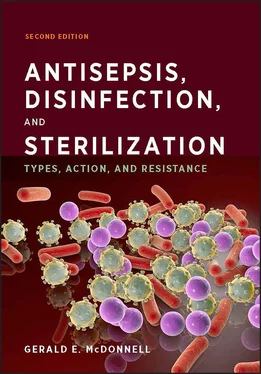TABLE 1.22 Examples of biological-indicator standards
| Reference a |
Title |
Summary |
| ISO 11138-1 |
Sterilization of Health Care Products—Biological Indicators—Part 1: General Requirements |
General requirements for production, labeling, test methods, and performance characteristics of biological indicator systems to be used in the validation and routine monitoring of sterilization processes |
| ISO 11138-2 |
Sterilization of Health Care Products—Biological—Part 2: Biological Indicators for Ethylene Oxide Sterilization Processes |
Specific requirements for biological indicators used for ethylene oxide sterilization, including test organism and performance criteria |
| ISO 11138-3 |
Sterilization of Health Care Products—Biological Indicators—Part 3: Biological Indicators for Moist Heat Sterilization Processes |
Specific requirements for biological indicators used for moist-heat (steam) sterilization, including test organisms and performance criteria |
| ISO 14161 |
Sterilization of Health Care Products—Biological Indicators—Guidance for the Selection, Use and Interpretation of Results |
Guidance for the selection, use, and interpretation of results of biological indicators used in the development, validation, and routine monitoring of sterilization processes |
| EN 866-1 |
Biological Systems for Testing Sterilizers and Sterilization Processes. Part 1—General Requirements |
General requirements for production, labeling, test methods, and performance characteristics of biological indicator systems to be used in the validation and routine monitoring of sterilization processes |
| USP XXIII |
Biological Indicators—Resistance Performance Tests |
Testing of the resistances and population of biological indicators |
| EP 5.1.2 |
Biological Indicators of Sterilization |
Requirements for biological indicators, including population and resistance |
a ISO, International Standards Organization; EN, European Norm, from the CEN (European Committee for Standardization); USP, United States Pharmacopeia; EP, European Pharmacopoeia.
Other, miscellaneous indicators include mechanical indicators, such as gauges or sensors that measure temperature, concentration, pressure, time, etc., that are used to monitor various physical parameters during a given process and cleaning indicators that use artificial test soils inoculated onto a surface to test (generally by visual inspection) physical removal during a cleaning process or cycle. Mechanical indicators play an important role in the parametric release of a product or process as an alternative to the use of chemical and biological indicators for routine monitoring of sterilization processes (see section 1.4.2.4).
TABLE 1.23 A typical classification of chemical indicators
| Class |
Type |
Description |
| 1 |
Process indicators |
Indicate exposure to minimal process conditions; used to differentiate exposed from unexposed items (e.g., autoclave tape) |
| 2 |
Indicators for use in specific tests |
Indicate that a specific process is obtained, which is linked to the sterilization process (e.g., a Bowie-Dick test indicates the adequate removal of air from a prevacuum steam sterilizer) |
| 3 |
Single-parameter indicators |
Indicate a change on exposure to one parameter (e.g., concentration of a biocide or temperature). |
| 4 |
Multiparameter indicators |
Indicate a change on exposure to at least two parameters |
| 5 |
Integrating indicators |
Indicate a change on exposure to all the critical parameters of a given process (e.g., ethylene oxide sterilization with temperature, biocide concentration, relative humidity, and time) |

FIGURE 1.24 Example of a chemical-indicator color change.
1.4.2.4 PARAMETRIC CONTROL
The concept of parametric control (or release) as a method to verify the effectiveness of a biocidal process is based on the understanding of all the key physical parameters that can affect its success or failure. Although theoretically this could be applied to any disinfection or sterilization process, it is generally restricted to well-characterized sterilization methods, including steam, dry heat, ethylene oxide, and ionizing radiation. An example is steam sterilization. The efficacy of steam is affected by the temperature and time, but also by the presence of air (see section 5.2). These parameters are reasonably well understood and can be physically measured (by using mechanical indicators [see section 1.4.2.3]) to ensure that the correct conditions have been met during a given steam sterilization cycle. In addition to monitoring these conditions, a series of in-process tests and controls are also conducted to provide further assurance that the sterilization process has been efficient. However, the concern with parametric release as an alternative to biological monitoring is in the control of other variables that can affect the effectiveness of the process. In the case of steam, these include the quality of the steam (see section 5.2), variations in the load being sterilized, and in the case of reusable devices, if the cleaning process has been sufficient prior to sterilization (see section 1.4.8). In most cases, disinfection and sterilization processes are routinely tested and monitored using a combination of biological and chemical indicators in parallel with mechanical indicators for parametric control.
TABLE 1.24 Examples of chemical-indicator standards
| Reference a |
Title |
Summary |
| ISO 15882 |
Chemical Indicators—Guidance on the Selection, Use, and Interpretation of Results |
Guidance for the selection, use, and interpretation of results of chemical indicators used in process definition, validation, and routine monitoring and control of sterilization processes |
| ISO 11140-1 |
Sterilization of Health Care Products—Chemical Indicators—Part 1: General Requirements |
General requirements for production, labeling, test methods, and performance characteristics of chemical indicators to be used in the validation and routine monitoring of sterilization processes |
| ISO 11140-3 |
Sterilization of Health Care Products—Chemical Indicators—Part 3: Class 2 Indicators for Steam Penetration Test Sheets |
Specific requirements for class 2 steam penetration test indicators |
| EN 867-1 |
Non-Biological Systems for Use in Sterilizers—Part 1: General Requirements |
General requirements for indicators that are used to monitor the presence or attainment of one or more sterilization process variables |
| ANSI/AAMI ST60 |
Sterilization of Health Care Products—Chemical Indicators—Part 1: General Requirements |
Requirements for chemical indicators intended for use with sterilization processes employing steam, ethylene oxide, irradiation, or dry heat |
a ISO, International Standards Organization; EN, European Norm, from the CEN (European Committee for Standardization); ANSI/AAMI, American National Standards Institute/Association for the Advancement of Medical Instrumentation.
1.4.2.5 MICROSCOPY AND OTHER TECHNIQUES
Читать дальше













